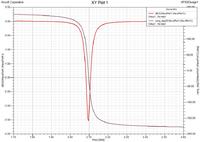harishbigh
Newbie level 4
te 10 mode
I am trying to calculate reflection phase for patch reflectarray and i want to compute the reflection phase using floquet ports.
I have simulated the reflectarray structure using waveguide simulator approach and already got reflection amplitude and phase.
I am trying to use floquet ports to excite similar TE10 mode and compare my results.
Any suggestion are welcome.
thank you
I am trying to calculate reflection phase for patch reflectarray and i want to compute the reflection phase using floquet ports.
I have simulated the reflectarray structure using waveguide simulator approach and already got reflection amplitude and phase.
I am trying to use floquet ports to excite similar TE10 mode and compare my results.
Any suggestion are welcome.
thank you
